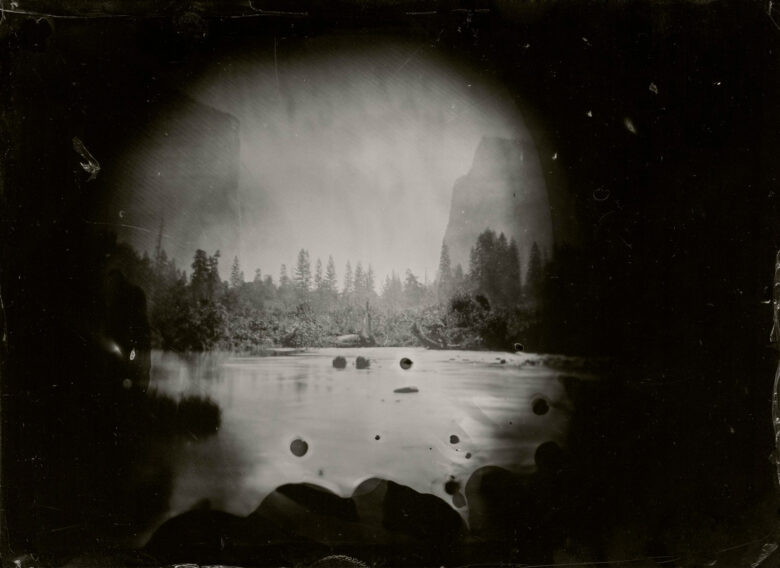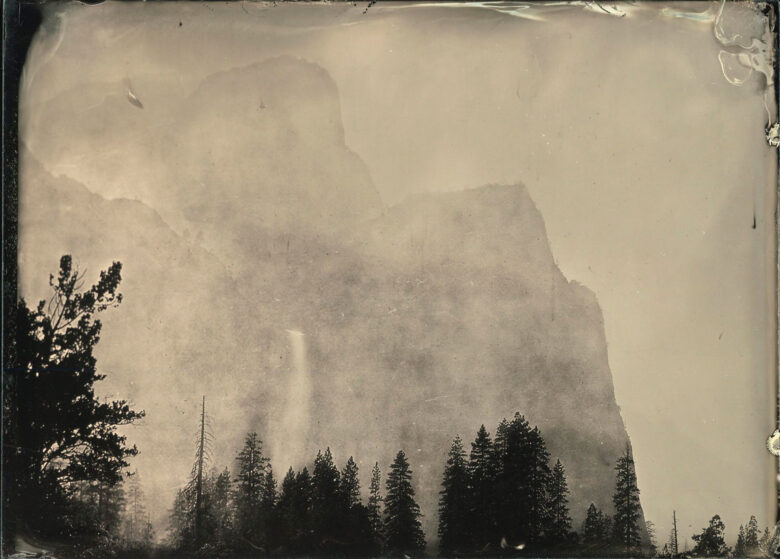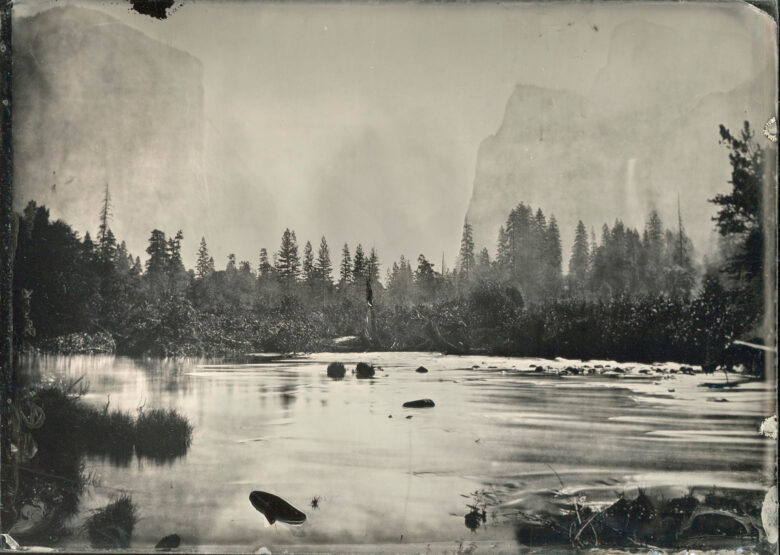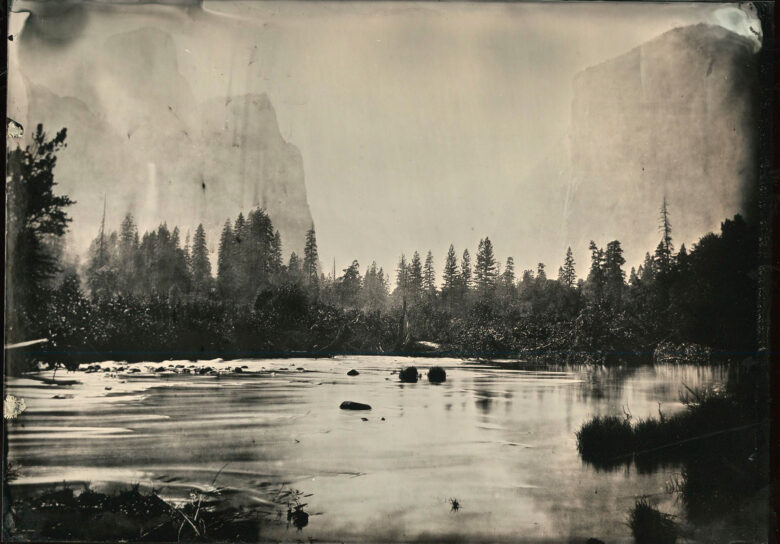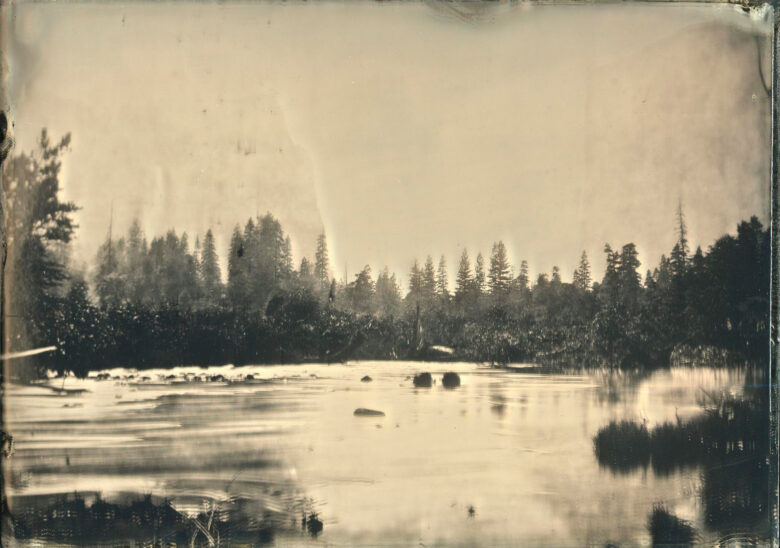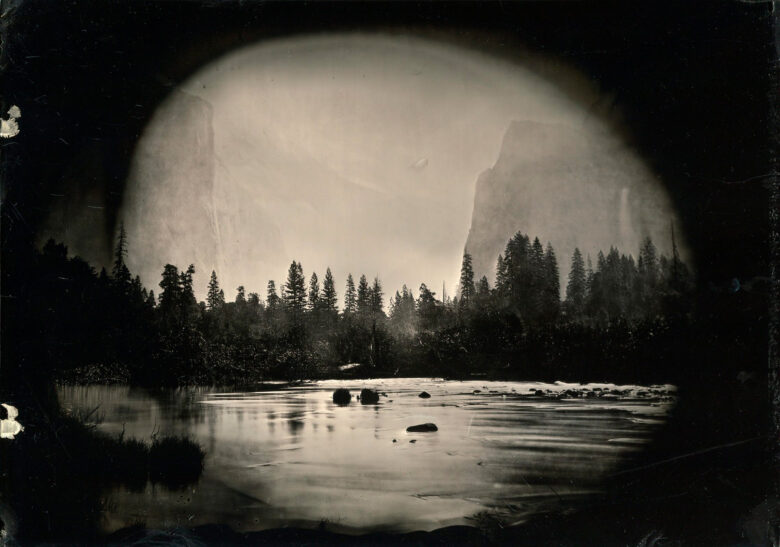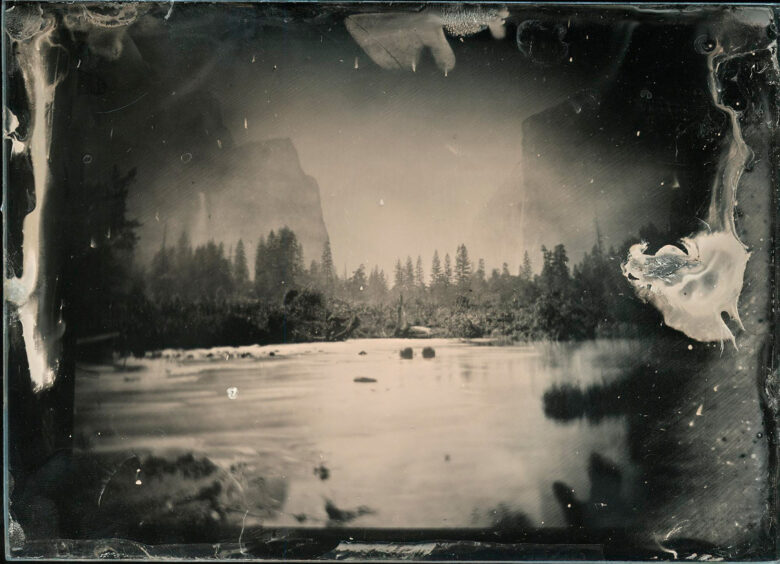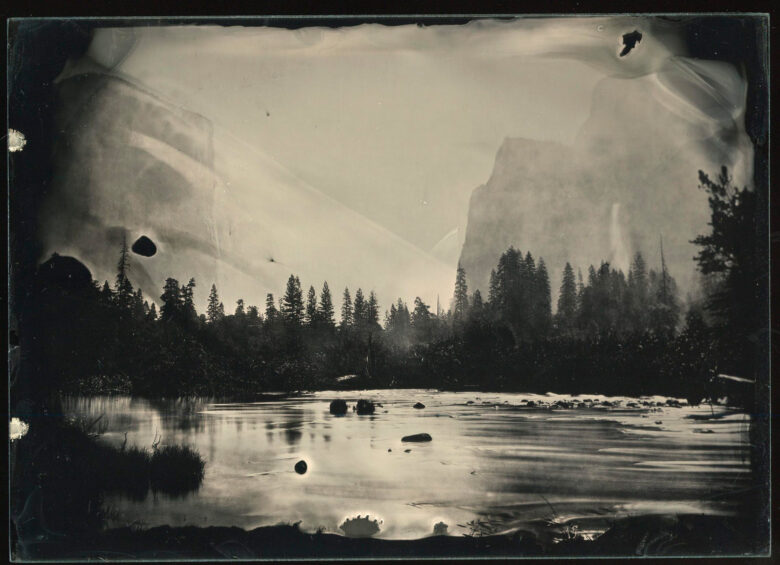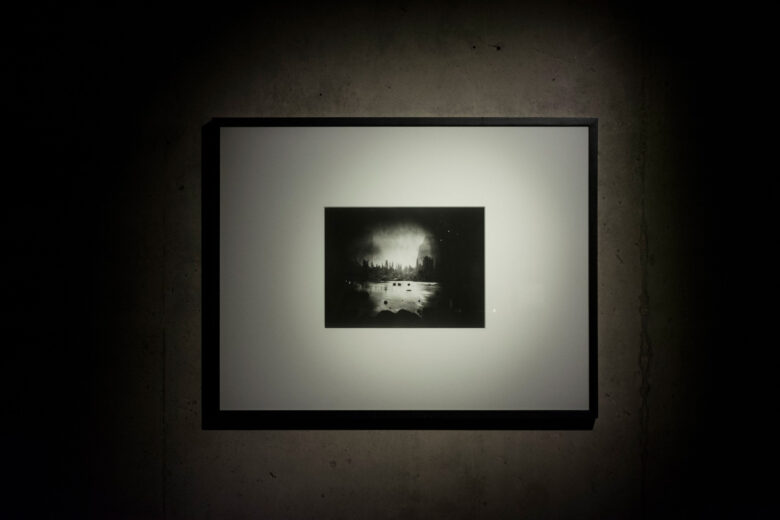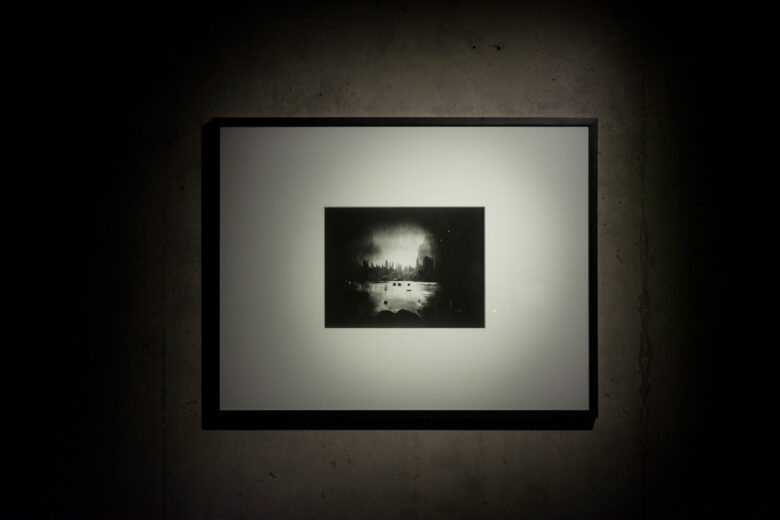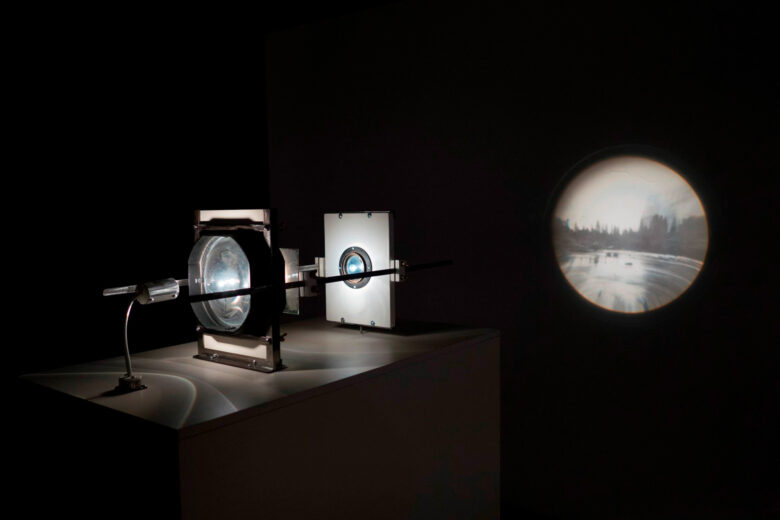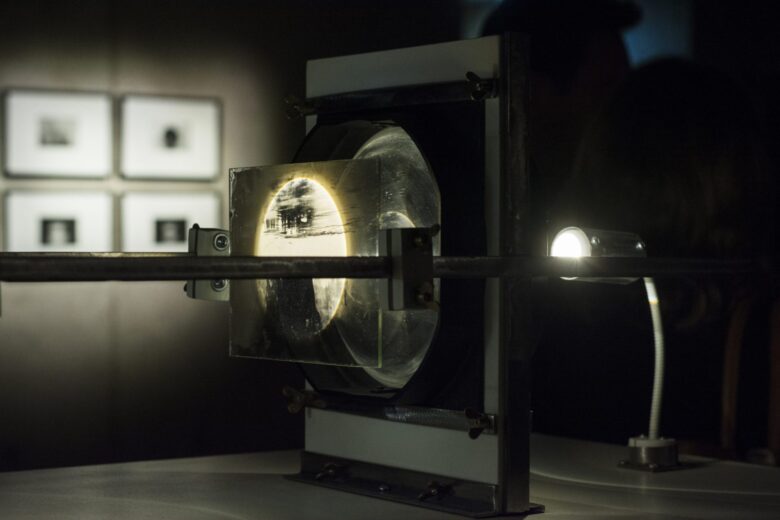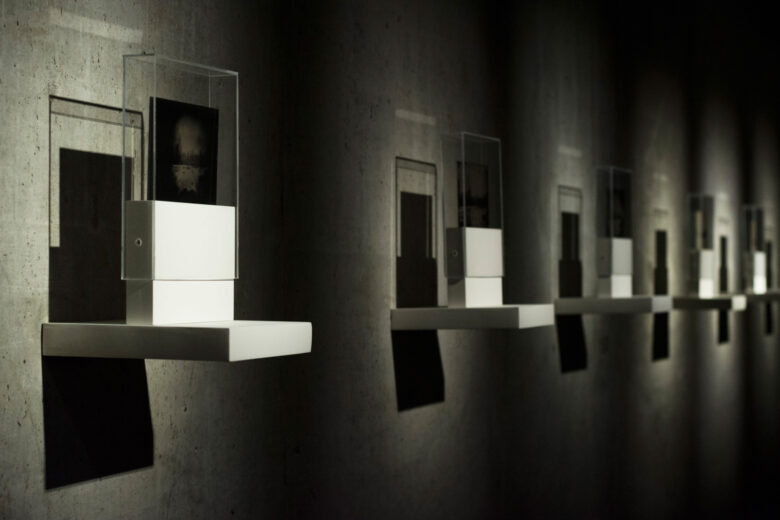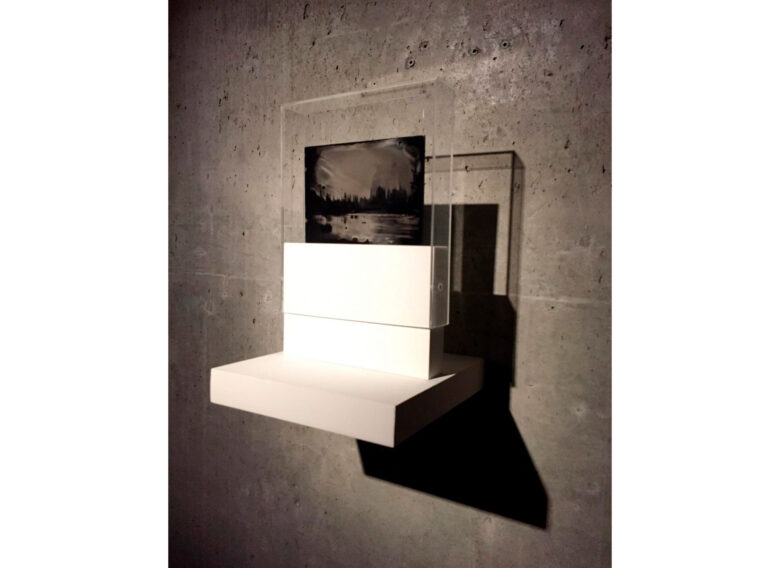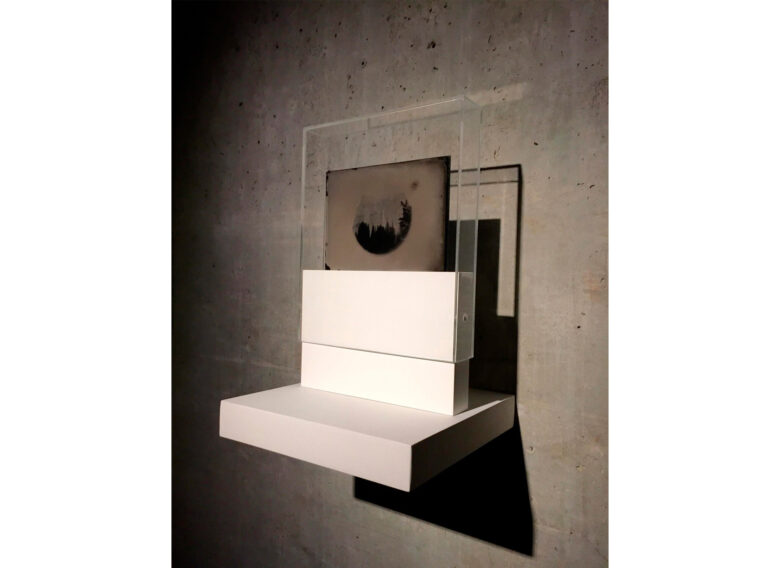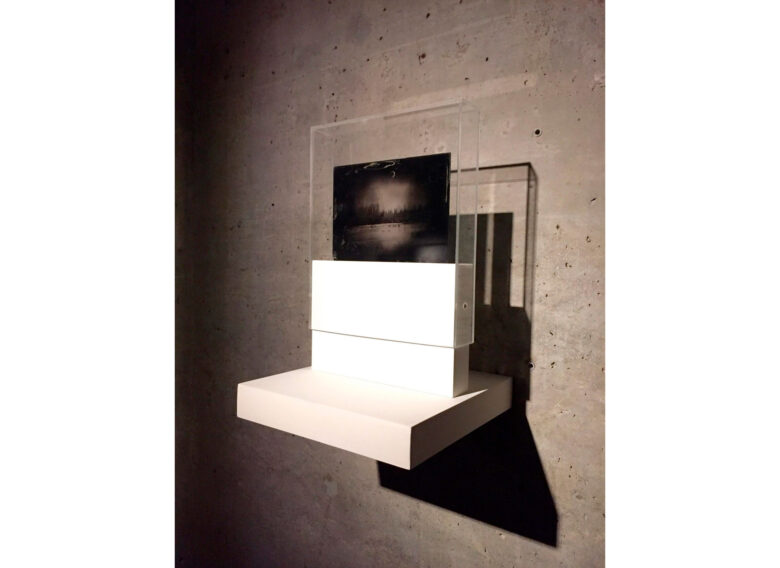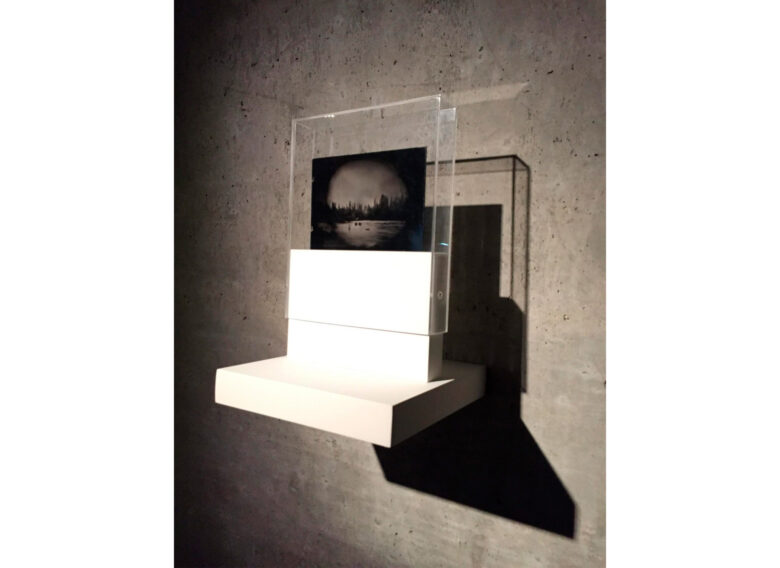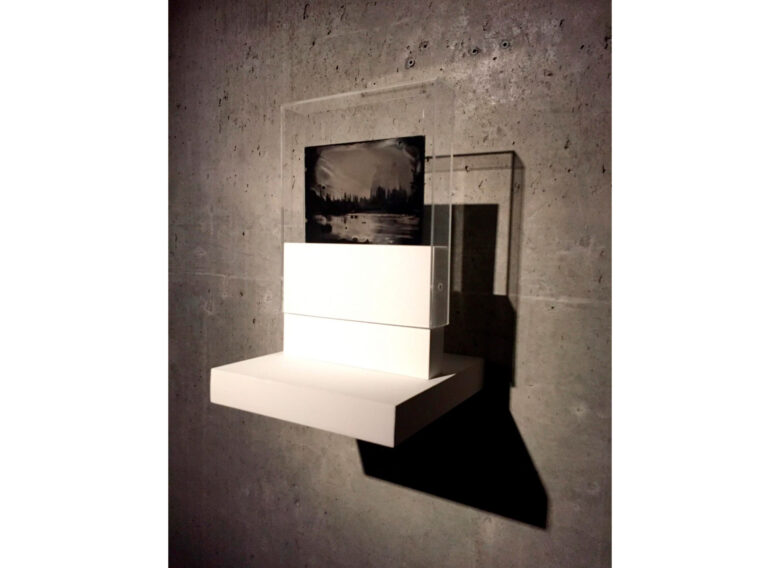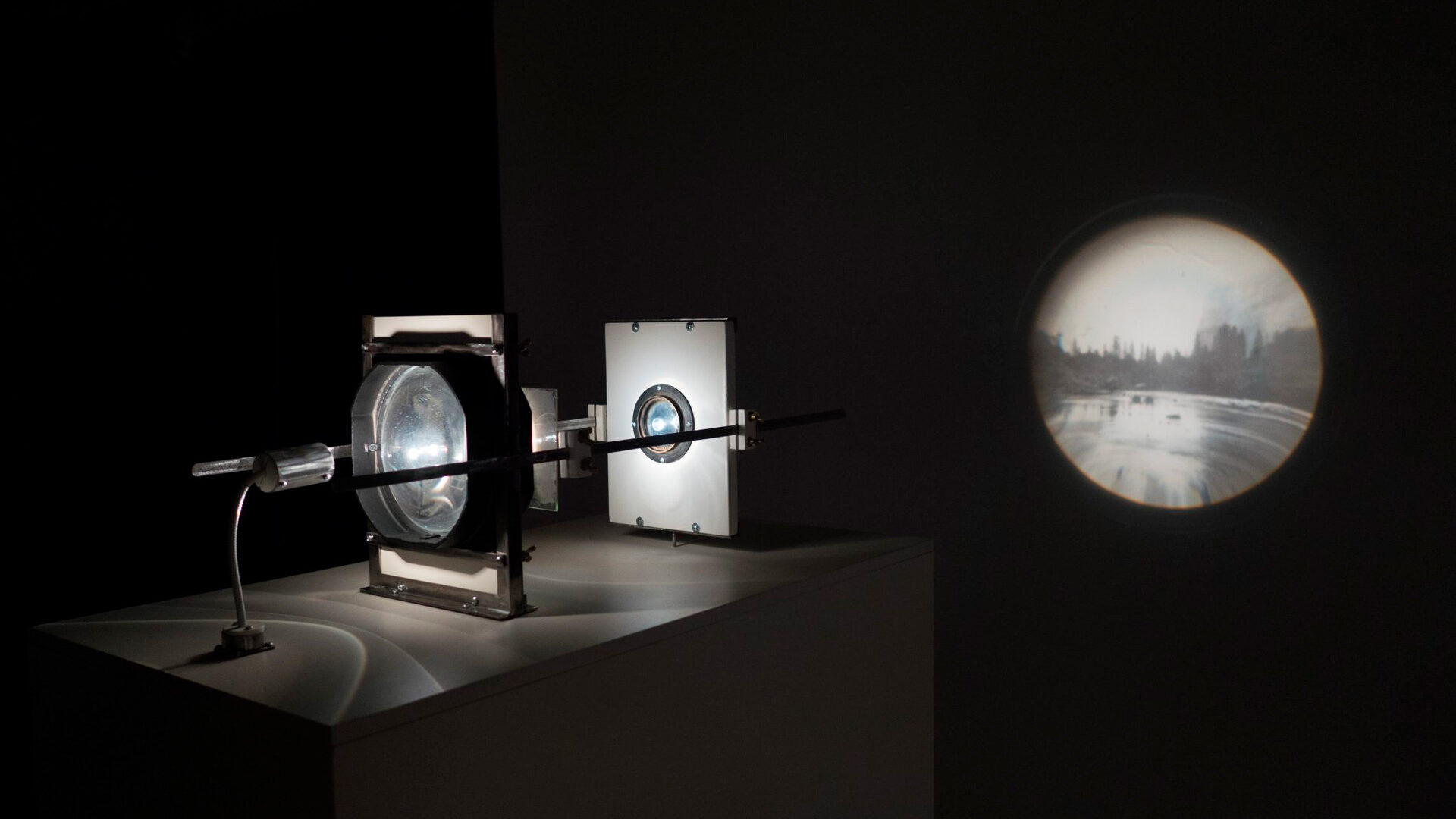Valley of the Yosemite, from Rocky Ford (1872)
2016
About this series
Subject of lengthy discussion revolving around image and its signs, a clever text authored by Rosalind Krauss in 1981 was the first to suggest that rather than taking avant-garde movement as an affirmative gesture, it should be taken as a discourse where myths and legends used to camouflage its main legacy: originality. Far from being a form of language which revealed the extraordinaire, or stated that the only evident trait in art is that nothing is evident anymore —as Theodore Adorno would claim—, the mechanism concealed within the avant-garde in the postmodern era had produced two techniques: repetition and appropriation.
It is Valley of the Yosemite, From Rocky Ford (1872) by Eadweard J. Muybridge which Ms. Galban uses as the object of the appropriation technique. It is here where the origin of that everlasting return which the artist suggests becomes visible. Using a digital image as a starting-point, Ms. Galban chooses the framing, dissects the supports, and dissolves the image implementing the history of photographic device technē and gives it her own personal take. The glass plates placed in a contiguous and juxtaposed way take center stage in her work, stressing the round and differential account which deviates from related modernity, and helps wonder about how photographic narrative can be deconstructed, without progressive lineal and continuous mechanisms.
If appropriation becomes one of the systems structuring this work, repetition is the positive of this portrayed reality. Both techniques are embodied in glass plates using wet-collodion, or faux daguerreotypes, ambrotypes, gelatin silver, or postcard processes, or in light projections. The effort of prioritizing photographic processes —over the resulting image— links Galban’s work to that of a group of contemporary artists, whose main questioning lies in image fixing process and photographic support.
With few elements left to chance, but for that nearly plastic spot of the collodion, Galban gives a new twist to the images of one of the pioneers of modern photography. Going back to Krauss’s suggested appropriation techniques is coming full circle.
Teresa Riccardi, 2016
